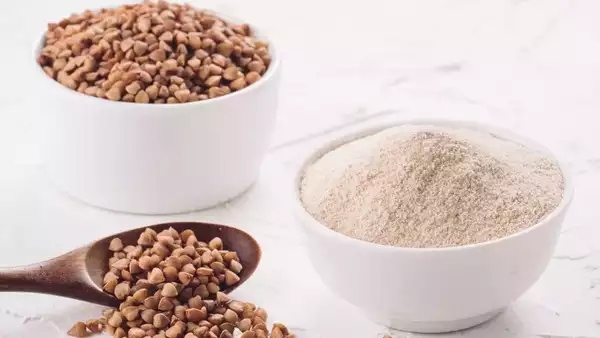In another case of food adulteration, around 150 people fell ill allegedly after consuming contaminated buckwheat flour in Uttar Pradesh’s Meerut. Those affected were admitted to the district hospital, with local reports indicating that some patients are in critical condition.
Authorities suspect that the flour may have been adulterated, leading to a widespread case of food poisoning. Unfortunately, this isn’t an isolated incident as similar cases linked to contaminated buckwheat flour have emerged in the past, raising concerns about food safety and quality in the region.
What is buckwheat flour?
Traditionally, buckwheat flour, also known as ‘kuttu ka atta’ is used for making rotis, puris and other dishes when people fast for religious or health reasons. Buckwheat flour’s scientific name is Fagopyrum esculentum. It is known by various names in different regions, including Tau, Ogla, Bresh, and Fafhad.
Despite having ‘wheat’ in its name, buckwheat is not a grain; it is classified as a fruit seed. This unique classification distinguishes it from traditional cereals, making it a popular choice for gluten-free diets.
Where did buckwheat plant originate?
The cultivation of buckwheat is believed to have originated in Southeast Asia around 5,000 to 6,000 years ago. From there, it spread to Central Asia, the Middle East, and eventually to Europe. Written references on its use can reportedly be found in Finland dating as far back as 5300 BC.
The buckwheat plant typically grows to a height of 2 to 4 feet, featuring triangular green leaves.
It produces small white flowers, which eventually develop into bunches of fruits. Once dried, these fruits yield small brown seeds similar to chickpeas, which are ground to make buckwheat flour.
Where is buckwheat cultivated in India?
In India, buckwheat is cultivated primarily in hilly regions at altitudes of around 1,800 meters. Key areas for buckwheat farming include Jammu and Kashmir, Himachal Pradesh, Uttarakhand, and the Nilgiri region of South India. It is also grown in certain parts of Northeast India.
The crop is sown during the Rabi season and is ready for harvest in just 30 to 35 days. Harvesting occurs when the crop is about 80 percent ripe. After harvesting, the crops are dried, and the seeds are separated before being ground into flour.
Which country is the biggest producer of buckwheat?
Russia, China, and Kazakhstan are the three largest buckwheat-producing countries in the world, with the United States ranking fourth. Additionally, significant production occurs in Ukraine and Kyrgyzstan, where buckwheat is a staple in the local diet.
In Japan, buckwheat flour noodles, known as soba, are particularly popular, while in China, buckwheat vinegar is commonly made. In America and Europe, buckwheat flour is often used to create cakes and pancakes, highlighting its versatility in various cuisines.
Why is buckwheat called a superfood?
Buckwheat is often referred to as a superfood because it is classified as a fruit and can be used in various ways, such as making puris and pakodas during fasts. According to health experts, buckwheat is an excellent source of protein, with approximately 15 grams of protein per 100 grams. It also contains a good amount of carbohydrates and fibre, reinforcing its status as a superfood.
Buckwheat flour contains alpha-linolenic acid, which is effective in controlling bad cholesterol. According to the American Journal of Gastroenterology, it also has insoluble fibre, which helps reduce the risk of gallbladder stones. Importantly, buckwheat flour has a low glycemic index, making it beneficial for diabetes patients.
What is the Shelf Life of Buckwheat Flour?
The shelf life of buckwheat flour is relatively short, lasting about one to one-and-a-half months. Consuming it after this period can lead to food poisoning.
Adulteration in buckwheat flour is also common, and experts suggest that the easiest way to identify it is by its colour.
Pure buckwheat flour has a brown colour, which may change if wheat flour or other substances are mixed in. Another sign of adulteration is that the flour tends to fall apart while kneading.


